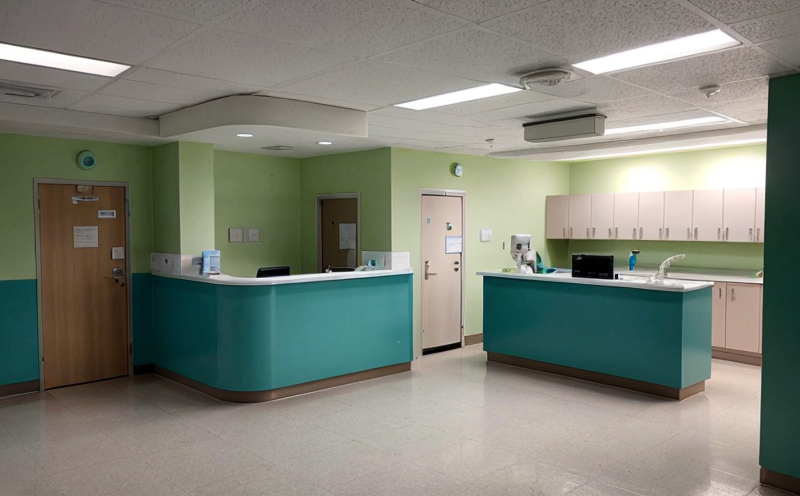EN 17141 Cleanroom Microbiological Monitoring in Hospitals
The European Standard EN 17141:2015 specifies the requirements for cleanroom microbiological monitoring, particularly focusing on healthcare settings. This standard ensures that hospitals and other medical facilities maintain a controlled environment to prevent the spread of microorganisms which could compromise patient safety.
Compliance with this standard is essential in environments where sterility is crucial, such as operating theaters, intensive care units, and neonatal wards. The standard covers various aspects including air quality monitoring, surface contamination control, and personnel hygiene practices. It also emphasizes the importance of regular sampling and analysis to ensure that the environment remains suitable for patient care.
One of the primary goals of EN 17141 is to provide a framework for cleanroom operators to implement effective microbiological monitoring programs. This includes defining parameters such as microbial limits, acceptable contamination levels, and appropriate sampling methods. By adhering to these guidelines, facilities can minimize the risk of nosocomial infections, which are infections acquired by patients in hospitals.
The standard also addresses the challenges faced by healthcare professionals in maintaining a cleanroom environment. These include managing bioaerosols, controlling static electricity, and ensuring proper ventilation systems. The use of advanced technologies like air filtration systems and UV germicidal irradiation devices is encouraged to further enhance the cleanliness of the environment.
In addition to specifying technical requirements, EN 17141 emphasizes the importance of training personnel involved in cleanroom operations. This includes not only medical staff but also support teams responsible for cleaning and maintaining the facility. Proper education ensures that all individuals understand their role in maintaining a safe and sterile environment.
Regular audits and assessments are another key aspect outlined by EN 17141. These evaluations help identify areas where improvements can be made and ensure continuous compliance with the standard. By incorporating these practices into routine operations, hospitals can maintain high standards of cleanliness and safety.
| Application Area | Description |
|---|---|
| Operating Theaters | Maintaining sterility during surgical procedures. |
| Intensive Care Units (ICUs) | Reducing the risk of infections for critically ill patients. |
| Newborn Intensive Care Units | Protecting premature infants from potential pathogens. |
Why It Matters
Ensuring compliance with EN 17141 is not only a legal requirement but also vital for patient safety and healthcare quality. Hospitals that adhere to this standard can significantly reduce the incidence of nosocomial infections, leading to better health outcomes for patients.
The standard plays a crucial role in protecting vulnerable populations within hospitals, such as elderly patients, neonates, and those undergoing immunosuppressive treatments. By implementing strict microbiological monitoring protocols, facilities can create safer environments that minimize the risk of microbial contamination.
Compliance with EN 17141 also contributes to the overall reputation of a hospital or healthcare facility. Patients and their families are more likely to choose institutions that demonstrate a commitment to cleanliness and safety. This can enhance patient satisfaction and trust, which are essential for long-term success in the healthcare industry.
Furthermore, compliance with this standard helps facilities meet regulatory requirements set by various governing bodies. For instance, the European Commission and national health authorities often mandate adherence to such standards to ensure that healthcare providers meet international best practices.
Industry Applications
| Application Area | Description |
|---|---|
| Infectious Disease Units | Controlling the spread of infectious agents. |
| Critical Care Facilities | Maintaining a sterile environment for critically ill patients. |
| Pediatric Units | Protecting young children from potential pathogens. |
International Acceptance and Recognition
The acceptance and recognition of EN 17141 extend beyond Europe, as many countries around the world have incorporated its principles into their own national standards or guidelines. The standard’s emphasis on scientific rigor and practical implementation has made it a benchmark for cleanroom microbiological monitoring.
Recognized institutions such as the World Health Organization (WHO) and Centers for Disease Control and Prevention (CDC) recommend adherence to EN 17141 principles when establishing guidelines for hospital hygiene. This international recognition underscores the importance of this standard in ensuring global best practices in healthcare environments.
The widespread adoption of EN 17141 also benefits manufacturers of medical equipment, pharmaceutical companies, and other industries that rely on cleanroom facilities. By using this standard, these organizations can ensure consistent quality across different regions, enhancing the reliability and effectiveness of their products.





